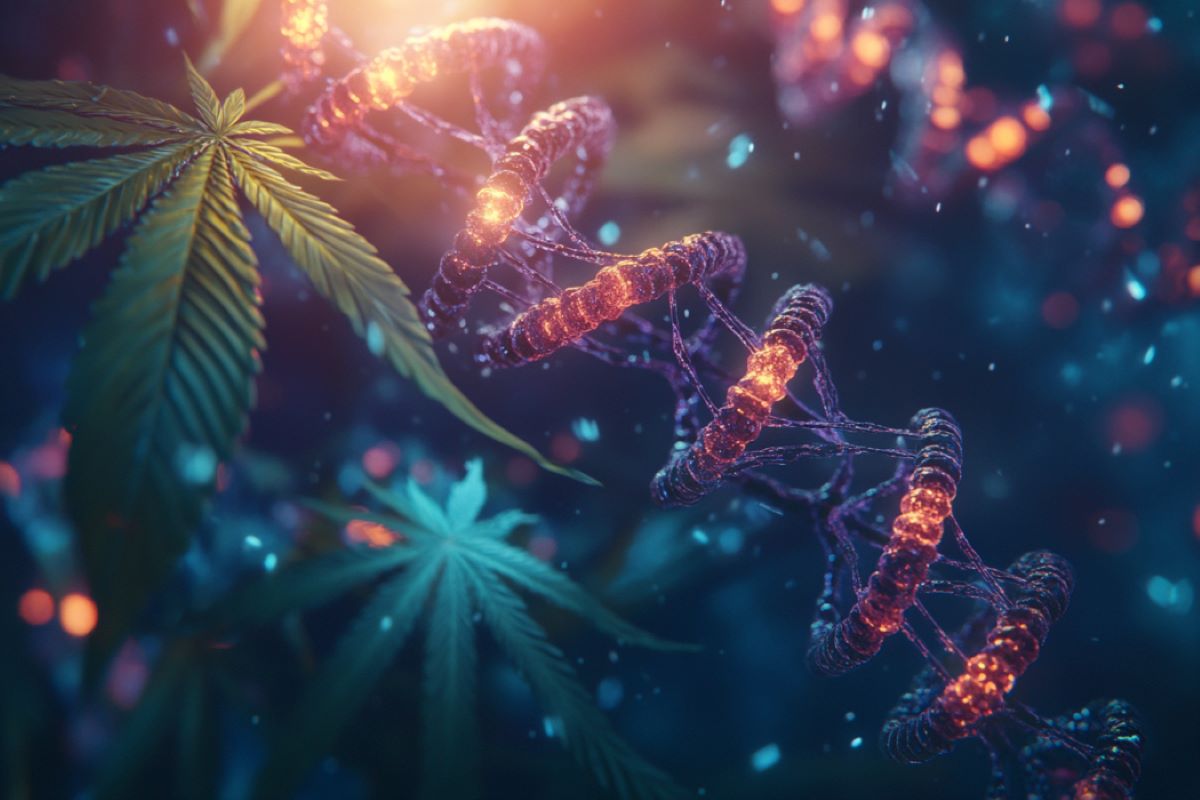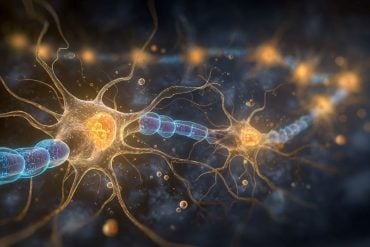Summary: Research indicates that cannabis use causes cellular damage that increases the risk of highly cancerous tumors by disrupting mitochondria and damaging DNA. This genotoxicity can result in mutations, accelerated aging, and birth defects, with potential to be passed on to future generations through egg and sperm. Insights from broader mitochondrial research provide a mechanistic understanding of how cannabis affects genetic stability.
Key Facts:
- Cannabis damages DNA, increasing cancer risk and accelerating aging.
- Genotoxic effects of cannabis can be inherited by future generations.
- Mitochondrial dysfunction links cannabis use to chromosomal damage.
Source: Society for the Study of Addiction
Cannabis use causes cellular damage that increases the risk of highly cancerous tumors, according to a new paper published in the scientific journal Addiction Biology.
The paper describes cannabis as a “genotoxic” substance because it damages a cell’s genetic information, which can lead to DNA mutations, accelerated aging, and cancer. To make matters worse, this genotoxicity may be transmitted via damaged egg and sperm to the cannabis user’s offspring, making the risk of cannabis use trans-generational.
In a recent publication in Addiction Biology researchers from The University of Western Australia have made a link between established knowledge that cannabis use damages cellular energy production by inhibiting mitochondria and new cancer research published in Science showing that mitochondrial dysfunction drives chromosomal damage, which shows up as increased rates of cancer, accelerated aging, and birth defects.

The Science studies were not conducted in the context of cannabis use; however, they provide mechanistic insights into some observations about cannabis use that were not previously well understood, such as that cannabis causes both mitochondrial and genetic damage.
Taken together, the article in Addiction Biology put older historical research about cannabis into context and suggests that cannabis-related genotoxic damage may be all around us — even if we largely don’t see it.
Co-author Dr. Stuart Reece comments: “The link we’ve described between cannabis use and genotoxicity has far-reaching consequences. This new research shows how genetic damage from cannabis use can be passed down the generations.
“This should reframe the discussion surrounding cannabis legalization from a personal choice to one that potentially involves multiple subsequent generations.”
About this epigenetics and cancer research news
Author: Jean O’Reilly
Source: Society for the Study of Addiction
Contact: Jean O’Reilly – Society for the Study of Addiction
Image: The image is credited to Neuroscience News
Original Research: Closed access.
“Micronuclear collapse from oxidative damage” by Stuart Reece et al. Science
Open access.
“Key Insights into Cannabis-Cancer Pathobiology and Genotoxicity” by Stuart Reece et al. Addiction Biology
Abstract
Micronuclear collapse from oxidative damage
INTRODUCTION
Chromosomal instability, a hallmark of aggressive cancers, is characterized by the presence of micronuclei, which are cytosolic rupture-prone structures that contain entire chromosomes or chromosome arms. The irreversible collapse of micronuclear envelopes is a central event in tumor progression.
Micronuclear collapse exposes the encapsulated DNA to the cytosol, catalyzing chromosomal rearrangements and epigenetic alterations that drive tumor heterogeneity as well as therapy resistance.
Micronuclear rupture also activates inflammatory signaling pathways that reshape the tumor immune microenvironment, promoting metastasis. Despite its importance, the underlying mechanisms of micronuclear collapse are unclear.
RATIONALE
Maintaining the integrity of the nuclear membrane is essential for cellular functions and organismal viability. It is unclear what cellular safeguards are compromised in micronuclei that lead to the breakdown of nuclear membrane integrity.
We posited that inherent dissimilarities between micronuclei and primary nuclei might explain their respective differences in membrane stability. For instance, micronuclei are 5- to 20-fold smaller than the primary nucleus.
Secondly, they possess abnormal nuclear envelopes, as evidenced by aberrant nuclear pore function and reduced lamin B1 levels. In addition, once ruptured, micronuclear envelopes are seldom repaired.
RESULTS
In this study, we integrated prior observations with our findings that micronuclear envelope rupture occurs because of the aberrant interaction between micronuclei and mitochondria, a process that is mediated by reactive oxygen species (ROS). Indeed, ruptured micronuclei were more likely to be intermixed with the mitochondrial network compared with intact ones, and manipulation of ROS levels correspondingly altered the rates of micronuclear rupture.
Subsequent proteomic analysis and genetic manipulations led us to the observation that ROS interfere with micronuclear integrity by disrupting the normal activity of the nuclear membrane repair complex known as the endosomal sorting complex required for transport III (ESCRT-III). Increases in ROS levels led to the micronuclear accumulation of the ESCRT-III scaffolding protein, charged multivesicular body protein 7 (CHMP7), promoting a noncanonical function.
ROS inhibited the export of CHMP7, leading to its persistence in the micronucleus and aberrant binding to its inner nuclear membrane partner LEM domain nuclear envelope protein 2 (LEMD2). ROS-induced cysteine oxidation catalyzed CHMP7 aggregation and reduced its interaction with its canonical binding partners in the ESCRT-III complex. The binding of CHMP7 aggregates to LEMD2 promoted micronuclear membrane deformation and collapse.
This effect was further exacerbated by ROS-dependent recruitment of the autophagy-related protein p62, which mediated the degradation of canonical ESCRT-III members, limiting any chances of subsequent membrane repair. Lastly, we found that this mechanism is relevant to human tumors. Elevated levels of ROS and aberrant CHMP7 function led to complex chromosomal rearrangements, or chromothripsis, known to arise from micronuclear rupture.
Furthermore, ROS generated under hypoxia induced micronuclear rupture in a CHMP7-dependent manner. In line with these findings, we observed a significant increase in micronuclear rupture along with CHMP7 accumulation in hypoxic regions of human head and neck cancer as well as in ovarian tumors.
CONCLUSION
Our results have uncovered a pathological interaction between micronuclei and mitochondria that underlies micronuclear rupture. By implicating ROS as regulators of micronuclear integrity, this work provides a mechanistic link between ROS-inducing conditions (such as free-radical generation and hypoxia) and downstream processes known to arise from the presence of micronuclei, including chromosomal rearrangements, epigenetic dysregulation, and tumor-promoting inflammation.
Abstract
Key Insights into Cannabis-Cancer Pathobiology and Genotoxicity
Whilst mitochondrial inhibition and micronuclear fragmentation are well established features of the cannabis literature mitochondrial stress and dysfunction has recently been shown to be a powerful and direct driver of micronucleus formation and chromosomal breakage by multiple mechanisms.
In turn genotoxic damage can be expected to be expressed as increased rates of cancer, congenital anomalies and aging; pathologies which are increasingly observed in modern continent-wide studies.
Whilst cannabinoid genotoxicity has long been essentially overlooked it may in fact be all around us through the rapid induction of aging of eggs, sperm, zygotes, foetus and adult organisms with many lines of evidence demonstrating transgenerational impacts.
Indeed this multigenerational dimension of cannabinoid genotoxicity reframes the discussion of cannabis legalization within the absolute imperative to protect the genomic and epigenomic integrity of multiple generations to come.







